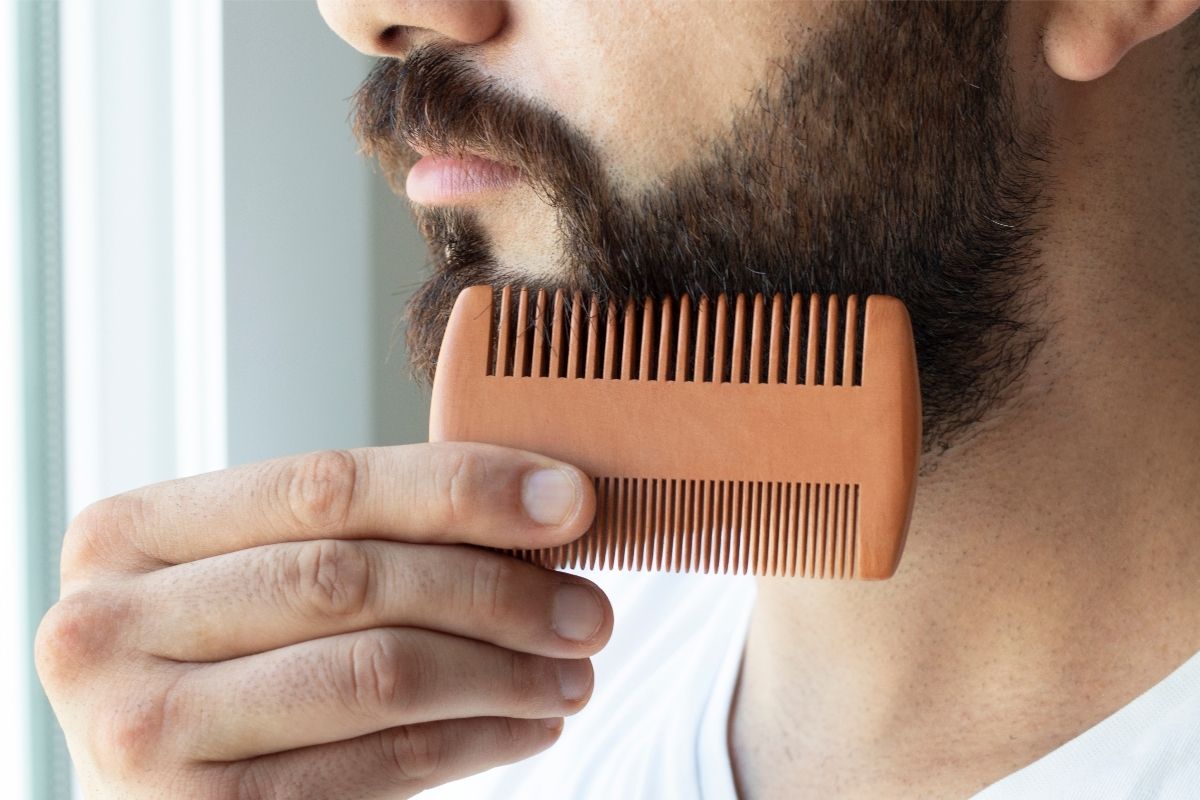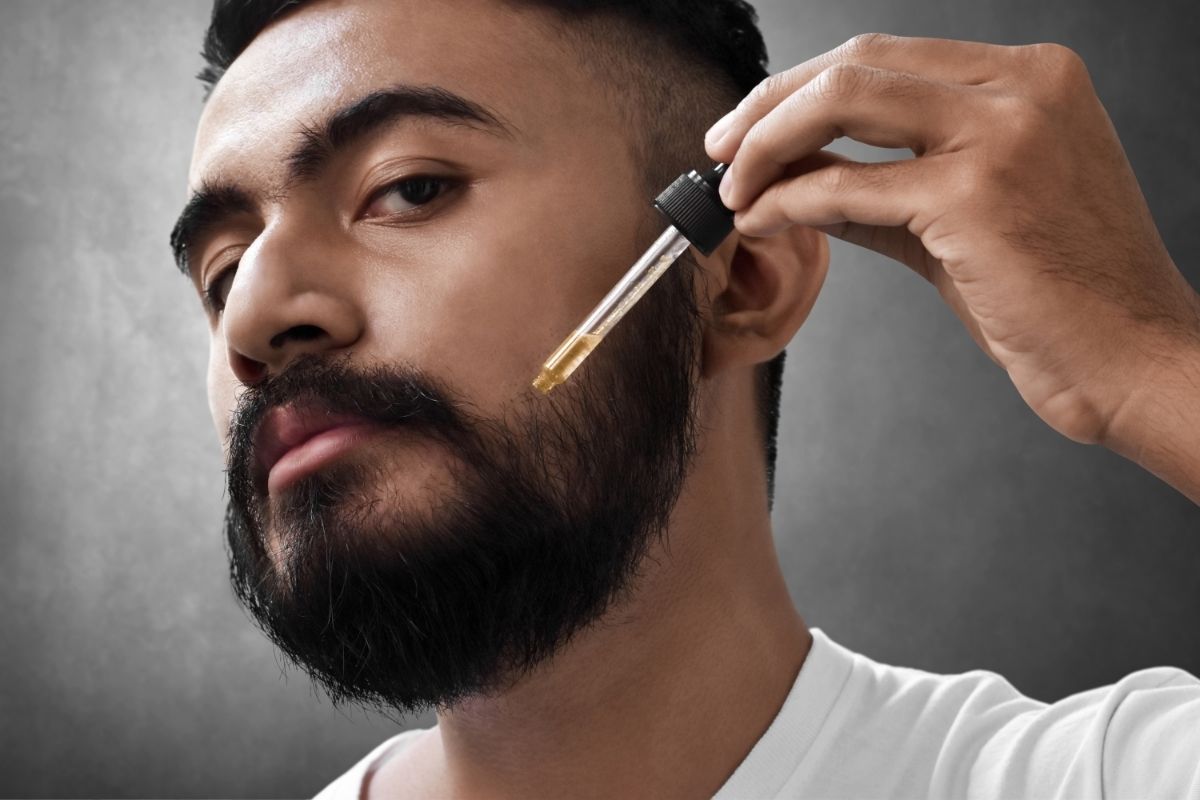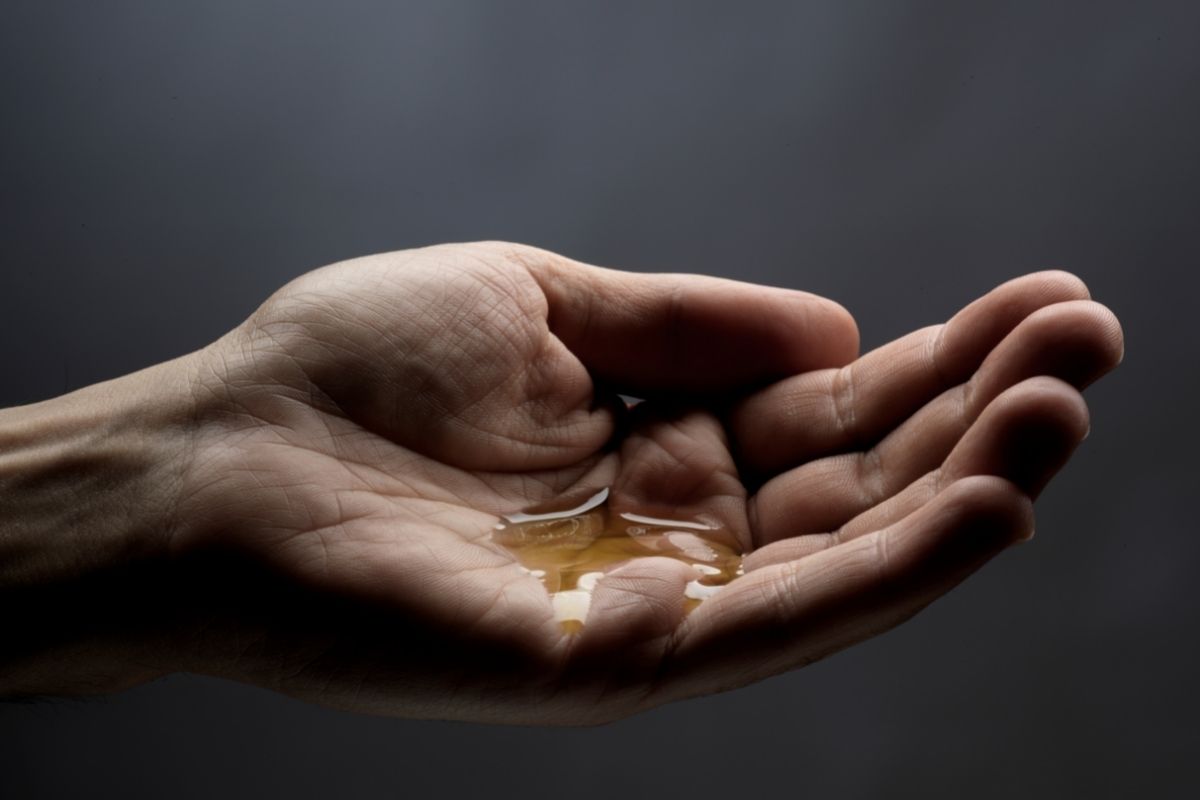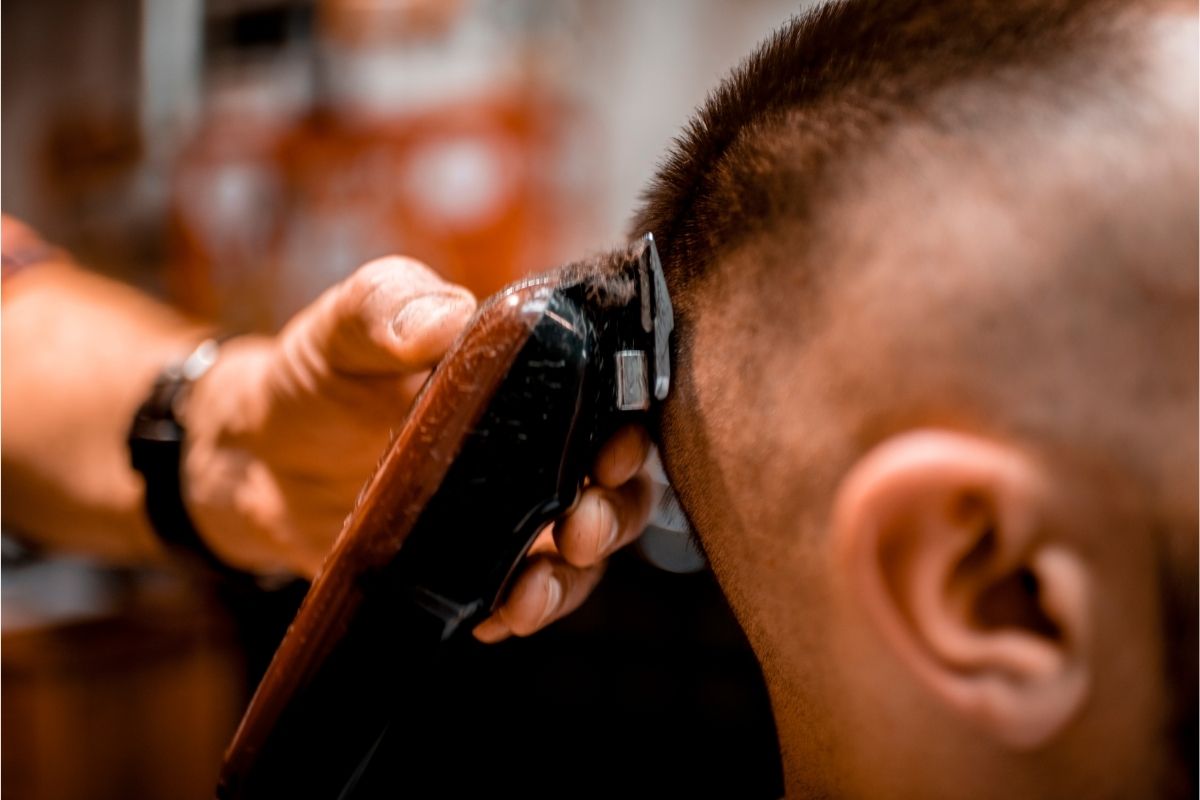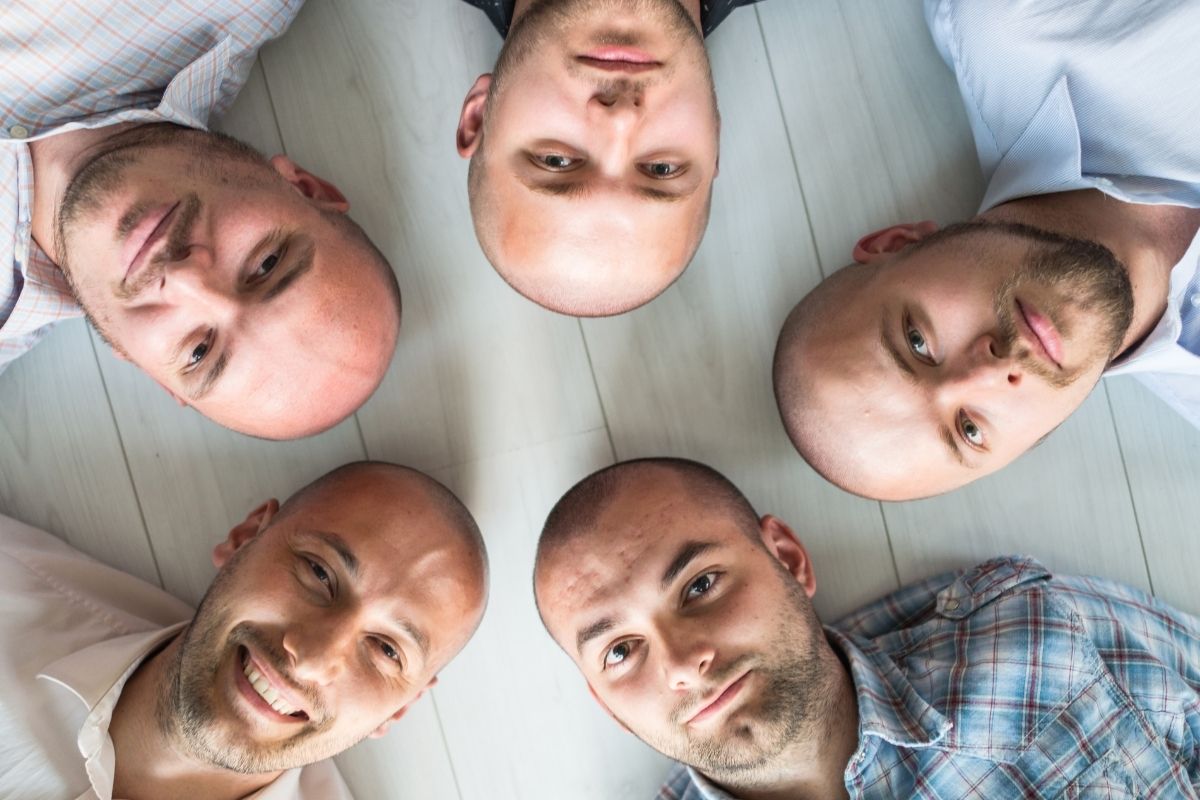While teenagers seem to be the most prone to pimples, they can occur on anyone’s skin, no matter their age. There are a number of reasons for acne to appear, and it is not always easy to pinpoint the exact reason why you have breakouts.

Pimples are caused by a buildup of oil and dead cells in your pores. These clogged pores allow bacteria to enter, which leads to an infection called acne. The bacteria then causes inflammation that results in a bump or blemish.
There are many different types of pimples including whiteheads, blackheads, cysts, and pustules.
Bumps sometimes appear on your face after you shave or wax, and this can be frustrating for those who already suffer from acne. Sometimes, it appears that the individual’s acne has become worse after shaving.
Does shaving cause acne, or does it simply make it worse? How can you avoid this from happening? Read on to find out more about what causes acne and how to prevent it!
What Is Acne?
Acne is a skin condition where there is an overproduction of sebum (oil) in the hair follicles. This excess oil collects in the pores, causing them to become blocked.
When the blockage occurs, bacteria begin to grow inside the pores. The result is an inflamed area that looks like a pimple. In some cases, the bacteria may also spread into other parts of the body, such as the nose, chin, neck, chest, back, shoulders, arms, legs, feet, scalp, etc.
Teenagers tend to be the most prone to suffering with acne, and the reason for this is because their hormones are at their peak. When they start puberty, their bodies produce more testosterone than estrogen, which stimulates the production of oil.
The increase in oil production makes the skin very oily, which means that it becomes easier for bacteria to multiply. Once the bacteria starts growing, it will create a red spot in the affected area.
However, it is not just teenagers who suffer from acne. This condition can impact any person at any age.
The spots usually appear on the face, but they can also appear elsewhere on the body. They can vary in size and shape, but they all look similar. Some people call these spots zits, while others refer to them as bumps, pimples, blisters, or even boils.
The severity of the acne varies depending on the type of acne. For example, if someone suffers from a mild case of acne, they might only notice one or two small spots. However, if the same person suffers from severe acne, they could end up having hundreds of spots.
So, Does Shaving Cause Acne?
The short answer: no.
Shaving, itself, does not cause acne. As we previously mentioned, acne is caused by too much oil being produced by the skin. While shaving removes the top layer of skin, it does not remove the oil underneath.
In fact, studies suggest that shaving actually helps reduce the amount of oil produced by the skin. This is because when you shave, you cut off the hair follicle, which reduces the blood flow to the area.
This prevents the oil glands from producing as much oil, so less oil ends up getting trapped in the pores.
However, when someone shaves, they often get rid of the protective oils that keep the skin moisturized. As a result, the skin dries out, making it more susceptible to breakouts. Therefore, acne can become worse if a person does not fully moisturize their skin afterwards.
Also, shaving can cause razor bumps, tiny bumps that form around the hair follicle after you shave. These occur due to friction between your skin and the blade of the razor. Ingrowing hairs are also common after shaving, which can cause an acne-like appearance on your skin.
So, while shaving can cause razor bumps and ingrowing hairs, the chances of your acne becoming worse after shaving are slim. This, however, doesn’t mean that you won’t end up with a few extra pimples.
How To Avoid Gaining Pimples While Shaving
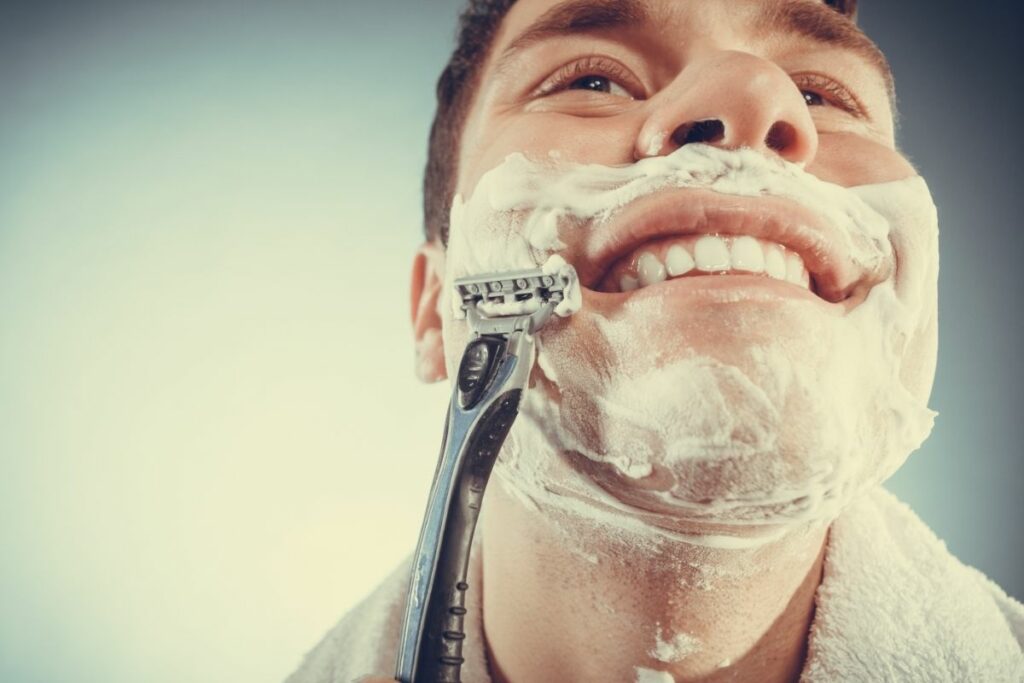
There are ways to avoid gaining pimples while shaving. Here are some tips to help prevent this from happening.
1. Use A Good Quality Razor.
A poorly designed razor, e.g., one with less razor blades, can irritate the skin and lead to irritation and inflammation. This is due to the way the blades move across the surface of the skin. If the blades are sharp enough, they should never touch each other.
A good quality razor should have a high number of blades, and the blades should be made of stainless steel. Also, you should avoid using a razor with blunt blades, as this will increase the risk of cuts, nicks, and ingrowing hairs.
Make sure you change your razor every so often. You don’t want to use the same razor for longer than that, as it may damage the blades, damaging your skin in the process.
2. Exfoliate Your Skin Beforehand.
Exfoliating is so important, whether you are shaving your face, legs, or any other part of your body. Exfoliation helps to get rid of dead skin cells, creating a smoother surface for your razor to move across your skin without causing bumps or cuts.
You should exfoliate your skin at least 24 hours prior to shaving. The reason for this is that you need time to let the exfoliant work its magic. So, if you wait until just before you plan to shave, you could end up with a bumpy, irritated rash.
If you do not exfoliate beforehand, you might find yourself with a lot of redness and irritation. In addition, you run the risk of having ingrown hairs, which can leave small scars.
3. Cleanse Your Skin Properly.
You should be cleansing your skin daily, regardless of whether you are planning to shave or not. However, it is especially important that your skin is completely clean before you shave, as dirty skin makes it easier for bacteria to grow.
When bacteria seeps into your pores, pimples will appear.
The best way to cleanse your skin is by using an oil-based cleanser. Oil-based cleansers are gentler on your skin compared to water-based ones. They are also better at removing dirt and oil from your skin.
When cleansing, make sure that you wash your entire face, including your neck and ears. It’s also essential to wash your hands and fingernails before cleansing: this prevents bacteria from spreading onto your face.
4. Don’t Apply Too Much Pressure.
Another reason that pimples form during shaving is that the shaver applies too much pressure when he/she moves the blade across the skin. This causes friction between the blade and the skin, leading to irritation and inflammation.
To avoid this, apply light strokes. Try to keep your hand steady, but still maintain a gentle motion.
You should also start by shaving in the direction that the hair grows, e.g., if your hair grows downwards, you should start by shaving in a downwards motion. Then, you can shave in the opposite direction. This will help prevent ingrown hairs.
5. Follow Up With A Moisturizer.
As we mentioned earlier, the biggest reason that people get pimples after shaving is because they have failed to moisturize their skin afterwards. This will cause your skin to dry out, making your skin more open to pimple breakouts.
You should find a suitable moisturizer for your skin, and gently massage it into your skin after shaving.
Moisturizing will not only help your skin heal easier while the hairs begin to regrow, but it will also make your skin feel a lot softer and smoother. Continue to moisturize your shaved skin in the mornings and in the nights.
6. Don’t Overdo It!
The best piece of advice for anyone suffering from outbreaks after shaving is to avoid shaving more than once per day. In fact, if you’re prone to acne, then you should probably limit yourself to only two shaves a week.
This is because shaving multiple times every single day will lead to clogged pores and increased chances of getting ingrown hairs. As mentioned above, these can lead to painful scarring. You should wait until the hair has grown back before shaving again.
If you feel like you need to shave more frequently, try alternating days instead of doing so every day. For example, you could shave Monday, Wednesday, Friday, and Sunday.
This way, you won’t have to worry about any ingrown hairs forming, and you’ll be able to enjoy a smooth, soft, and healthy looking face.
Final Thoughts
While shaving does seem like a simple process, there are actually many different factors which contribute to why some people develop acne after shaving. By following the tips listed above, you can reduce the likelihood of developing acne after shaving.
However, if you do experience an outbreak, don’t panic! There are plenty of treatments available which can help clear up your acne. Just remember to follow them carefully, as over-the-counter medications may contain ingredients which aren’t safe for pregnant women or young children.
Good luck.
- How To Trim A Beard With Scissors - February 28, 2022
- How To Make Your Beard Soft - February 28, 2022
- How To Bleach Tips Of Guys Hair - February 28, 2022

